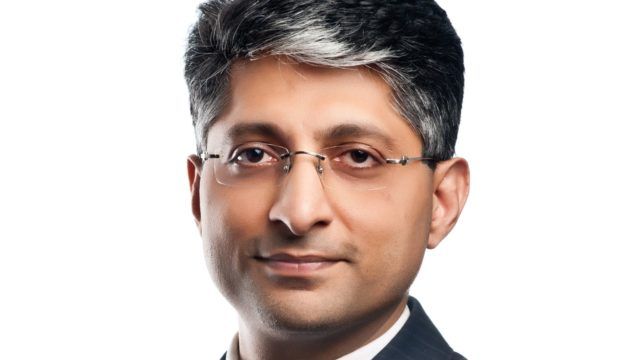BlackRock reckons that now is a good time to allocate to Asian bonds as the market is benefiting from its lack of correlation with the US fixed-income market.
“In a world where the stock-bond correlation is at multi-decades high, you have not really been able to diversify your portfolio over the last two years,” said Navin Saigal, head of Asia macro for fundamental fixed income at the US investment giant.
“Uncorrelated assets are extremely valuable for asset allocators because they help to balance a portfolio’s volatility and Asian fixed income checks this box even though yields are a bit lower.”
Neeraj Seth, CIO and head of Asia Pacific fundamental fixed income, (pictured) echoed those thoughts, pointing to the fact that this was largely a result of policy divergence between emerging Asia and the US given the fact that the former was not forced to hike as aggressively as the latter.
Overall, inflation was more benign in emerging Asia compared with the US and most of the policy rate hikes that occurred were largely to help stabilise the currency, leaving plenty of room for central banks in Asia to pivot early, most likely next quarter.
“The inflation impulse in Asia in 2021 and 2022 was not as high. In fact, I don’t remember in my life seeing inflation in a lot of these emerging countries like India or Indonesia to be below the US. Hence on the back of it, you do see a lot lower correlation, specifically within fixed income between Asia and the US,” he said.
Within Asia, Seth said that BlackRock currently favours India and Australia in particular, pointing to the favourable macro and demographic tailwinds in the case of the former and the disintermediation of the banking sector in the case of the latter.
In particular, he noted that in India the policy backdrop remained stable and while equity markets have largely re-rated to take into account the more benign environment, this has not occurred to the same extent in fixed income yet.
He also pointed out that foreign ownership of Indian bonds, at around 2% currently, was currently low, with the potential for this to increase with the inclusion of Indian government bonds in the JP Morgan flagship bond index imminent.
“The index inclusion will add maybe $25bn to $30bn of inflows, which will bring you from two to three-and-a-half percent foreign ownership and compare that to anywhere else in the world for an investment grade rated country with a positive trajectory, I think it’s still an interesting market to look at for fixed income investors, which I would argue hasn’t happened so far,” he said.
Meanwhile, in Australia, he noted that insofar as the banking system was being disintermediated by the local credit markets, this was more akin to the situation in the US than the rest of Asia.
“It’s not the case when you look at India, Indonesia, the Philippines, Malaysia, Thailand, Singapore or Vietnam, where the banking systems are much more traditional, with higher capital ratios and are still capturing close to 70% of the credit extension in the system. In India, you will see the credit growth at 15% in the last 12 months. That’s very different than what you observed in the US, Australia or parts of Europe in terms of the banking system,” he said.
Overall, BlackRock is neutral when it comes to China, noting that there is the prospect for further easing as the problems in the real estate sector and weak consumer demand continue to weigh on the economy’s outlook.
Seth noted that overall Asian fixed income performed quite well last year, up 7% or 8.95% ex-China as the sector has already come through its default cycle, which started back in 2021 when the problems with China Evergrande first emerged.
Although, he is cautious about picking a winner between local currency and US dollar-denominated bonds, pointing out that a lot of it hinged on the trajectory of the greenback.
“When you want to compare apples to apples, you have to compare in a single currency,” he said. “I do think there is a potential for both markets to do well, but it’s hard to build a very strong case of a big performance because that’s where you have to think of your dollar call.”

















